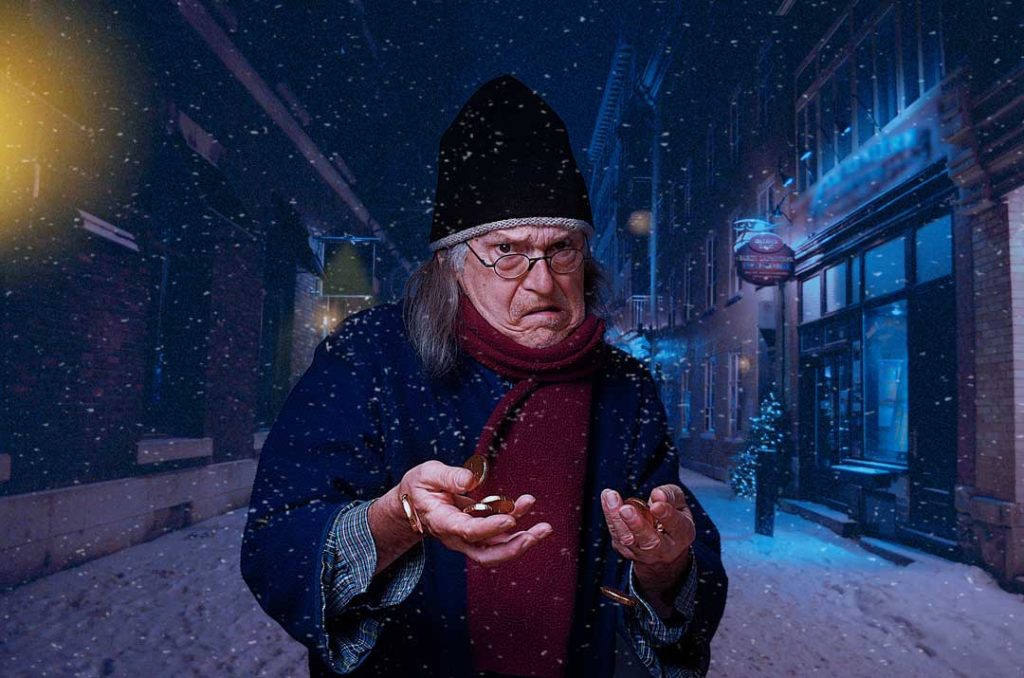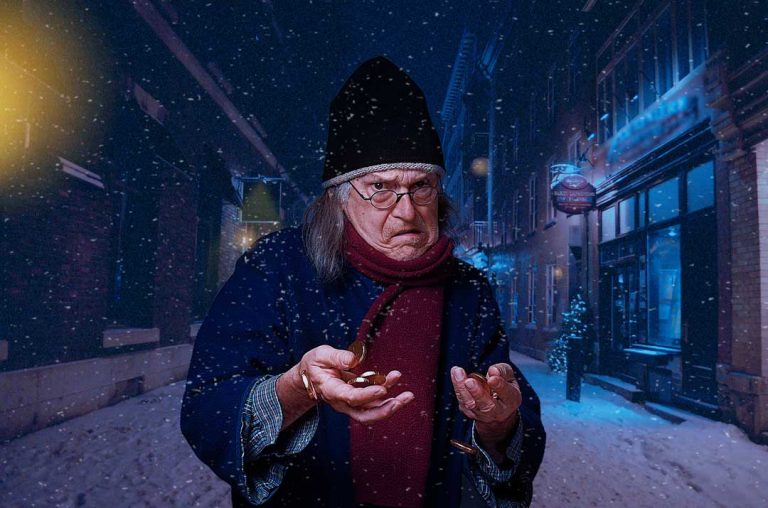Is Charles Dickens ‘A Christmas Carol’, the classic tale of a mean-spirited Ebenezer Scrooge the greatest piece of modern copywriting?
Mulled wine and mince pies are ready. It’s time to put a log on the fire and cosy up in front of the TV to watch Charles Dickens’ “Scrooge”. This iconic Christmas tale portrays the themes of greed, capitalism, want, and ignorance, followed by kindness, redemption, and charity, set in Victorian England. Whether your favourite version stars Alistair Sim, Michael Caine, George C. Scott, or Patrick Stewart, it’s an engaging story. But, do you know the story? If it were written today, perhaps it would be a seminal book on raising funds for charity using guilt and shame as its main tactics.
So could Charles Dickens ‘A Christmas Carol’ be the greatest modern piece of creative copywriting the world has ever known, let’s find out.

Charles Dickens was scheduled to speak at the Manchester Athenaeum, which was a philanthropic organization aimed at helping the working poor. He participated in an event in October 1843 that was intended to raise funds for the Athenaeum. During the event, he shared the stage with prominent politicians Richard Cobden and Benjamin Disraeli.
Charles Dickens was already a well-known and successful novelist. He was a self-made man who had a strong social conscience. After spending some time in Manchester, he realised that he needed to address the problems of Want and Ignorance. In his Christmas story, he portrayed these issues as two terrifying children. Want and Ignorance were the biggest threats facing England, and they were being bred in the slums of the country’s newly industrialised cities. Dickens decided that he could fight against these problems.
Charles Dickens initially intended to write a pamphlet titled “An Appeal to the People of England on behalf of the Poor Man’s Child.” However, within a week of contemplating, he altered his plan and chose to present his arguments through a story, featuring a protagonist with a pitiable depth. This decision transformed his work from a polemic intended to lecture, to a story that the audience craved.

In the spring of 1843, Charles Dickens began writing a pamphlet that later became the book ‘A Christmas Carol’. He was inspired to write this book after reading a government report on child labour in the United Kingdom. The report comprised interviews with children conducted by a journalist friend of Dickens, which revealed the harsh realities of their labour. Although ‘A Christmas Carol’ is a timeless classic, it was written with a specific purpose in mind – to address the issues of the day and to bring attention to the plight of child labourers.
The story of “A Christmas Carol” is a timeless classic that has been adapted into countless print, stage, and screen productions. It follows the tale of Ebenezer Scrooge, a miserly old man visited by the ghost of his former business partner and three spirits of Christmas. These visits make Scrooge realise his mistakes and help him embrace the true spirit of Christmas.
Six weeks after he started writing it, Charles Dickens finished the book A Christmas Carol. The first printing of the book consisted of 6,000 copies and was sold by Christmas Eve of 1843. By the end of the following year, the book had sold more than 15,000 copies. Despite this success, Charles Dickens was disappointed to have made only £726 from the book’s sales, which would be equivalent to around £80,000 today.

In a letter to his literary advisor, John Forster, Charles Dickens expressed his hope to earn at least £1,000 from his latest publication, A Christmas Carol. He remarked, “What a wonderful thing it is that such a great success should occasion me such intolerable anxiety and disappointment!” Similarly, Varese, a contemporary of Dickens, also believed that the publication did not generate significant financial returns.
Forster believed that if they had charged a higher price for the book, they could have earned even more from it. The book was priced at 5 shillings (£0.25), which was considered high for that time period. However, considering Dickens’s extravagant demands for his publisher – gold lettering on the front and back, four full-page colour etchings, gilded page edges, and a bright red and green title page – it is fair to say that the book could have been sold for a higher price than what it was priced at.
According to Varese, Charles Dickens made sure to set an affordable price for his Christmas book, not just to spread holiday cheer, but to also teach a lesson in economics to the people of London.
After publishing A Christmas Carol, Dickens continued to write books with similar themes for several years, which he called his Christmas Books. Although they were popular during his time, none of the others gained the same level of fame as A Christmas Carol, which has persisted as a modern fairy tale and has been adapted for television and stage productions countless times.
For more information on Charles Dickens click here.




